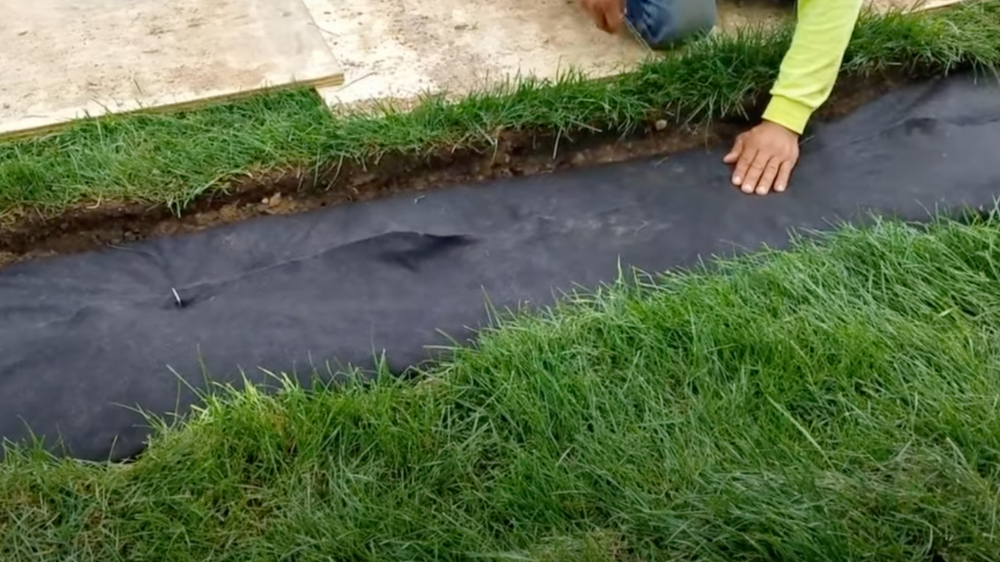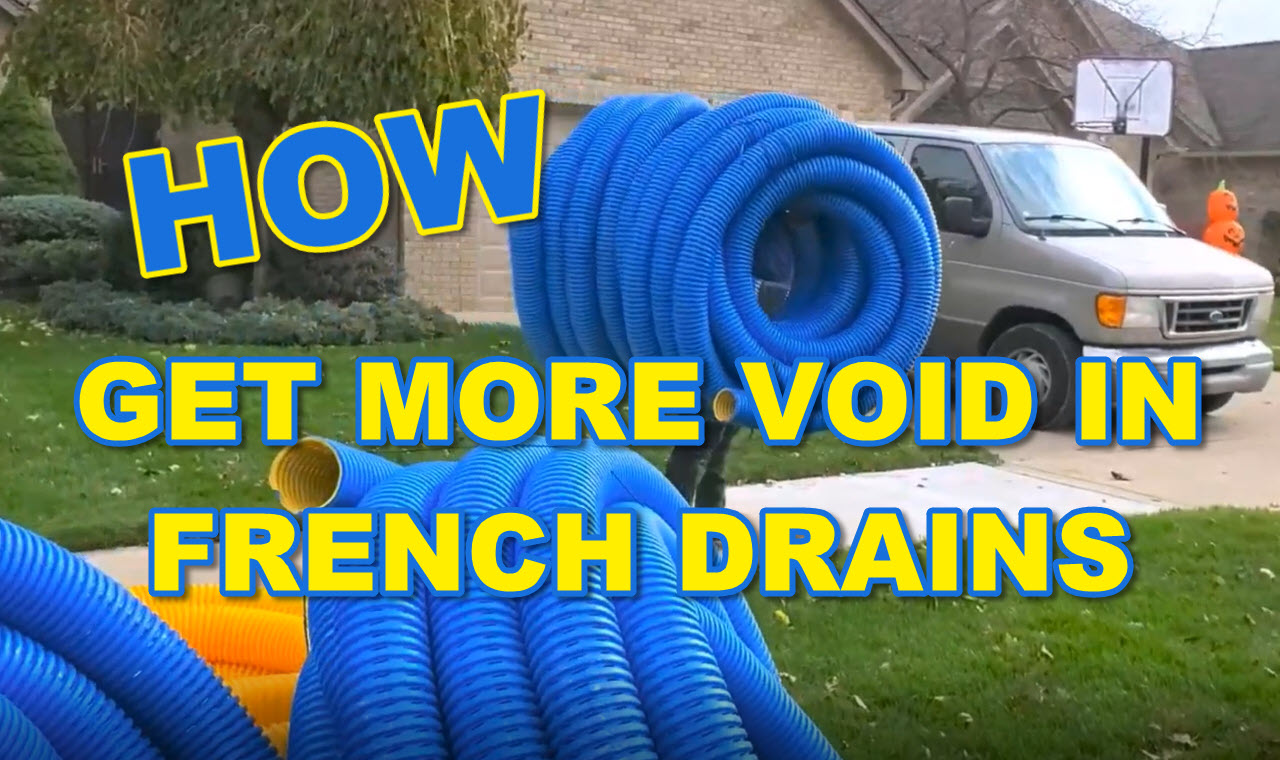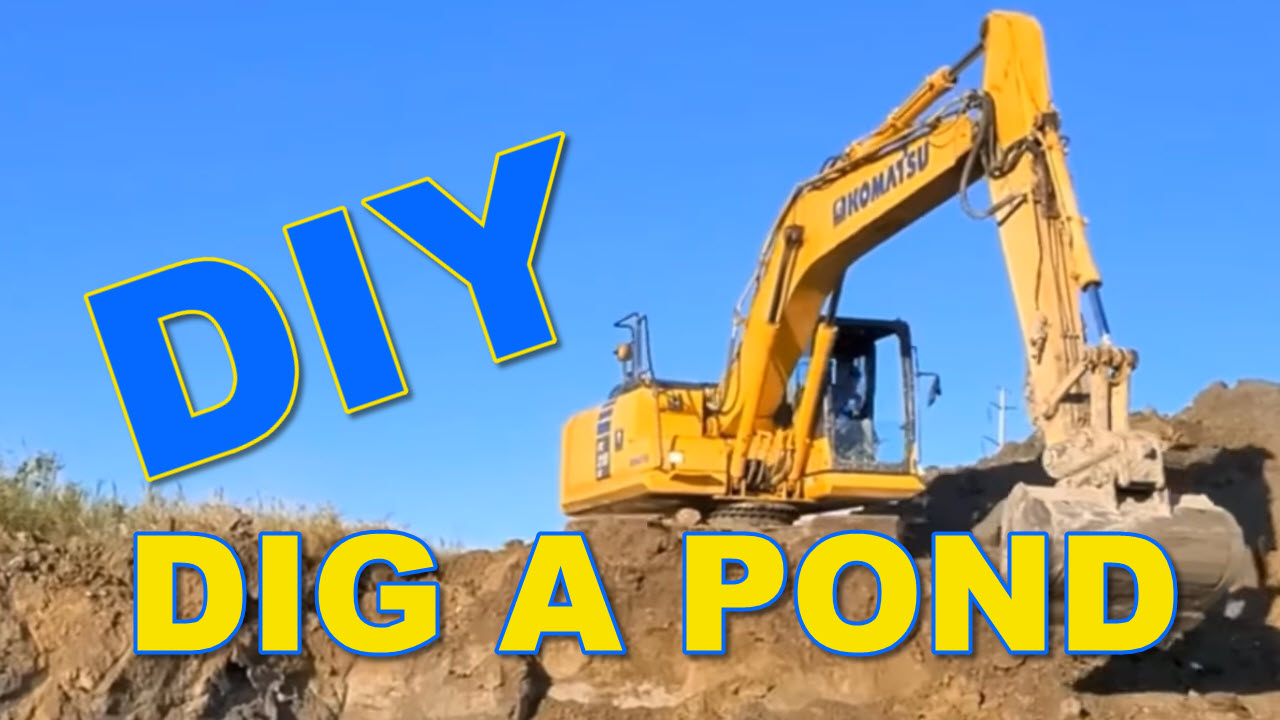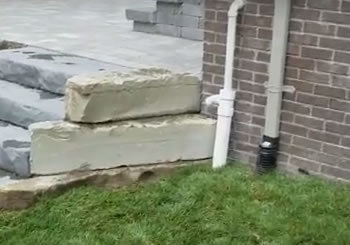All right, we’re in Rochester Hills, Michigan. There used to be a deck right here. The homeowner replaced a wood deck with a beautiful hardscape paver block, brick paver deck, retaining walls pillars, and it’s beautiful. The people that installed it did a really nice job. But unfortunately, drainage is something when it comes to building structures like this, a lot of companies fall a little short and it’s usually because you just have to live through enough as a contractor; experience and knowledge as you build.
Now, whenever I would build a hardscape feature like this on the back of a house and I knew I was in the swale, we would always run several pipes underneath the structure and then we would lay the first two or three courses of block and gap them, leaving a quarter inch gap for the water to run right through that retaining wall. Then we would fill it with one to three inch stone so the water would just run right through it. This was something that we got really good at and it was something that we got a reputation for.
Matter of fact, every time somebody wanted to build something in an easement, technically you can take it apart, put it on a pallet, put it on pallets and take it to your next home. So it’s kind of a gray area. It let us build on easements because it wasn’t a concrete footing. It wasn’t something that was permanent, although it’s pretty permanent, but it’s not concrete and it’s dry stack. Everything’s dry stack and dry laid. And again, it was a way to get around the ordinances, the building apartment, things like that. So for a long, long time, landscapers ran around, like it was the Wild Wild West, and we built whatever we wanted, where ever the homeowner wanted it.
Things have changed quite a bit since then, but here in Michigan, it’s still a little loose. Nobody’s cracking down on it and they built a beautiful patio. I can’t say anything bad about the craftsmanship and the work. However, they did not think about the lawn drainage. So all the water ends up just stuck here behind the house and there’s an elevated common area in this backyard, so you end up trapping all the water that’s coming across the neighbor’s lot into this lot .
So now to remedy this isn’t a big deal. It’s a flat area. The water gets caught up in here and it’s pretty much just trapped. If you’re just going to run one pipe, or maybe do a T, it’s just not enough. It’s been my experience, the homeowner’s not going to be happy. They’re going to call you. They’re going to have you back. You’re going to be out running more pipe. So I just recommend it to the homeowner, let’s grid it, so we don’t have to have any regret.

So the guys, they did a great job. I mean, this was a brutally cold morning in Michigan. Wind chill was in the teens and I have to give the guys credit, man. They really kept moving and they never complained about the conditions.
So we’re in the backyard where a landscaper built a beautiful patio. The water in this yard went under the wood deck that used to be there and drained out around this home. So this was done during the mid summer, Michigan’s drought season, July, August, and then a good rain came and the water just pooled right up in here.
You can build a drainage system that goes underneath a hardscape structure like this. We’ve done it many times. However, once something like this that’s so permanent has been done, all the water just stops and it’s completely saturating the entire backyard. That means a French drain grid. There’s nothing you can do. The water gets trapped. It needs help getting out to the front of this home where we have slope.
So here’s a French drain grid. Water was always laying around the air conditioner. We’re grabbing the downspouts. We’re not letting that water go. We’re taking it all the way to a six inch discharge line. So the French drain, and we’re going to have a total of four downspouts by the time we’re done with this. So four drops, the French drain, all to a mighty, mighty Virgin yellow; yellow on the inside, yellow on the outside, Baughman Gold, the premium.








